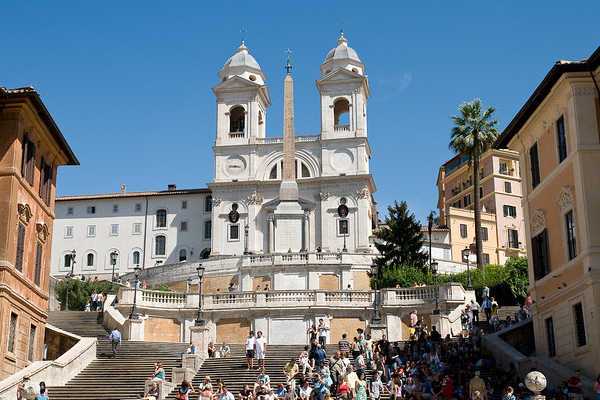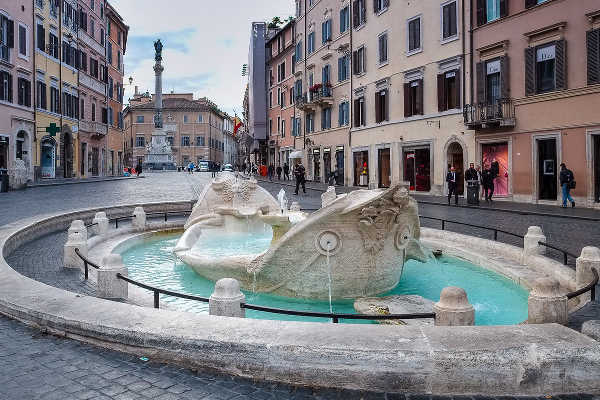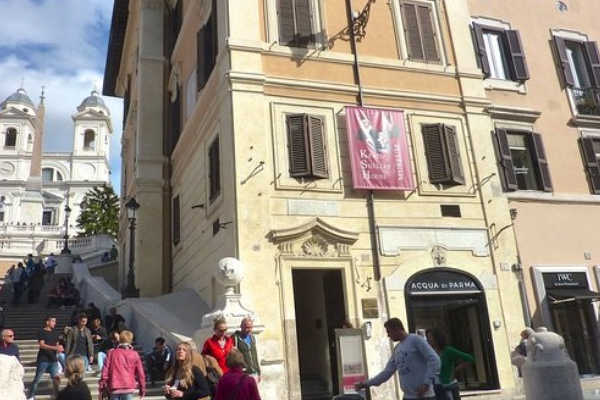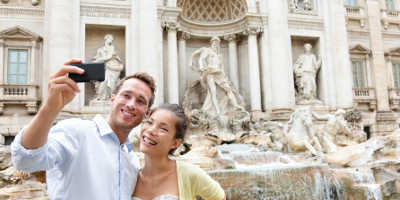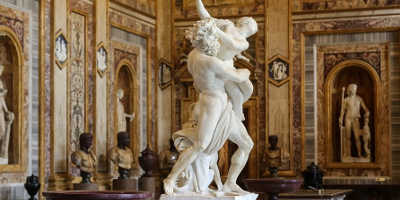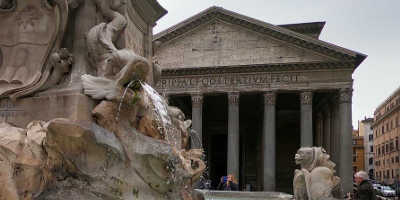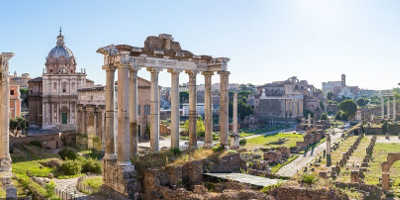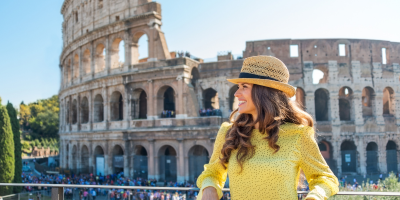Spanish Steps, Rome
The Spanish Steps are a set of stone steps in Rome that climb a steep slope between the Piazza di Spagna and the Piazza Trinitá dei Monti.
This enormous and rather beautiful staircase counts 135 steps and was built with the funds of a French diplomat in the mid-18th century. It was designed by architects Francesco de Sanctis and Alessandro Specchi.
History of the Spanish Steps
Though the steps were only brought to light in the mid-1700s, plans and drawings from the 1580s show that these steps had been on the table for over 100 years. The main reason for these steps was to link the Trinitá dei Monti Church at the top of the slope to the Spanish square below. This construction was named the Spanish Steps after the square, which in turn took its name from the Spanish Embassy as it was once considered Spanish territory.
The architect of the steps was found through a design competition held in 1717 and the winner was Francesco de Sanctis. Relatively unknown at this point, his design would make him famous throughout the world. When the steps were completed a few years later they were named after the church on the upper piazza, Trinitá dei Monti, but were later renamed after the lower piazza, Piazza di Spagna.
The popularity of these steps grew as more people saw their beauty. Artists of all kinds would visit to draw inspiration from the surroundings and the locals of Rome would use it as a meeting place. Beautiful women from around Italy also came to the steps in the hope that an artist would choose them to be their muse. This, in turn, attracted many men to the steps to look for a beautiful woman to marry. To this day both tourists and Romans use this destination to meet, have lunch or go for a stroll and the tradition of the Spanish Steps as a gathering place lives on.
Fontana della Barcaccia
At the foot of the steps, within the Spanish Square lies the Fontana della Barcaccia, also known as the Fountain of the Old Boat. This fountain was designed by the sculptor, Pietro Bernini and his son Gian Lorenzo Bernini likely helped to complete it after his father’s death in 1629. The fountain looks like a sinking ship and is based upon a folk legend. The story tells of a flood that submerged Rome in the 1500s and, as the water subsided, left a broken fishing boat in the middle of the square. Carved into the boat are two suns and a coat of arms containing bees. These are a symbol of the Bernini family and a reference to Pope Urban VIII who commissioned the fountain.
Places to Visit Around the Spanish Steps
The steps are surrounded by other interesting places to visit. Overlooking the staircase and the buildings of Rome is the Trinitá dei Monti Church, one of the highest churches in Rome. Built in 1519 this church is French in design and contains many Gothic elements. Inside you will find several beautiful works of art including the fresco cycles by the Zuccari brothers. This fresco depicts scenes from the old and new testaments and took an astounding 25 years to complete!
Another point of interest at the steps is the museum dedicated to the poets Keats and Shelley. John Keats lived here until he died in 1821 aged just 25 years old and his bedroom remains preserved in the building. Within the rest of the museum, you will find memorabilia associated with the two poets as well as one of the most impressive libraries of Romantic literature in the world.
A short walk from the steps is Villa Borghese, a park containing beautiful gardens, astonishing galleries, a theatre, and a zoo. A highlight of this park is the Borghese Gallery which houses some of the most spectacular art in Italy. Within the collection you can view works by Caravaggio, Bernini, and Raphael. This gallery only allows a few people in at a time which allows visitors a fantastic opportunity to view the incredible artworks without being surrounded by huge throngs of tourists.
After wandering around the gallery, you can stroll through the garden of Villa Borghese and relax in the shade of the trees. If you have children, then you can take them to visit the 200+ different species of animals that live in the Zoological Gardens or sit them in front of a puppet show at Teatro Stabile dei Burattini’s San Carlino Puppet Theatre.
If you’d like to take in one of the more unusual sights of Rome, then you can walk about 10 minutes from the Spanish Steps to the Museum and Crypt of the Capuchin Friars. Here you will find the skulls and bones of around 4,000 Capuchin friars. If you’re squeamish or have children, then this site is best avoided but if you would like to see the artful way in which the bones have been displayed then this will certainly stay in your mind as highlighting another side of Rome’s religious past.
To visit Rome and the Spanish Steps is to follow an ancient Roman tradition. Though these steps are fantastic to visit year-round, if you visit in May then you will see the steps adorned with pink Azaleas. Seeing the steps carpeted in the pink blooms will transport you out of the city into a stunning, scented flower garden. The impressive and beautiful Spanish Steps are a wonderful meeting place and are the ideal place to immerse yourself into the Roman culture and get a real taste for what the people of Rome are like.

